In-Class Making
IdeaLab fosters the use of making in classes in a variety of disciplines, creating opportunities for students to collaborate and learn in new ways. We help faculty design and implement making-based assignments, offering space, equipment, materials, practical expertise, and collaborative support. Please reach out to Darren Prodger or Cate Talley for more information.
Select Projects
3D Printing in Calculus II
Mathematics 113 taught by Lucy Oremland and Csilla Szabo
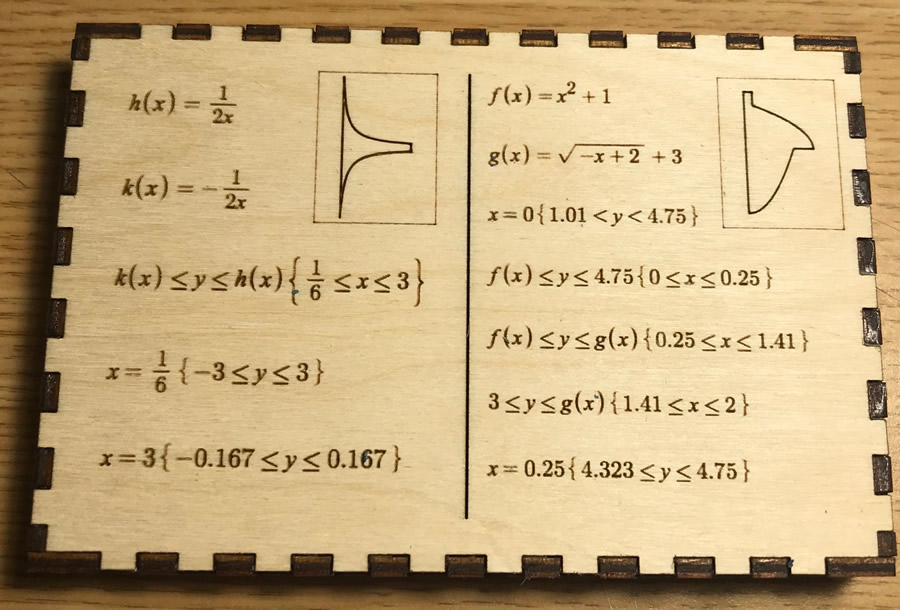
In this Calculus lab, students learn about “solids of revolution” by using CAD software to rotate a 2-dimensional graph around a chosen axis, and then printing the resulting 3-dimensional object using the 3D printers in the IdeaLab. The lab allows students to visualize the difference between approximation and exact calculation, to create models using mathematical software, and to hold a 3D structure they have created.
Screen Printing in Intermediate French
French 203 taught by Cate Talley
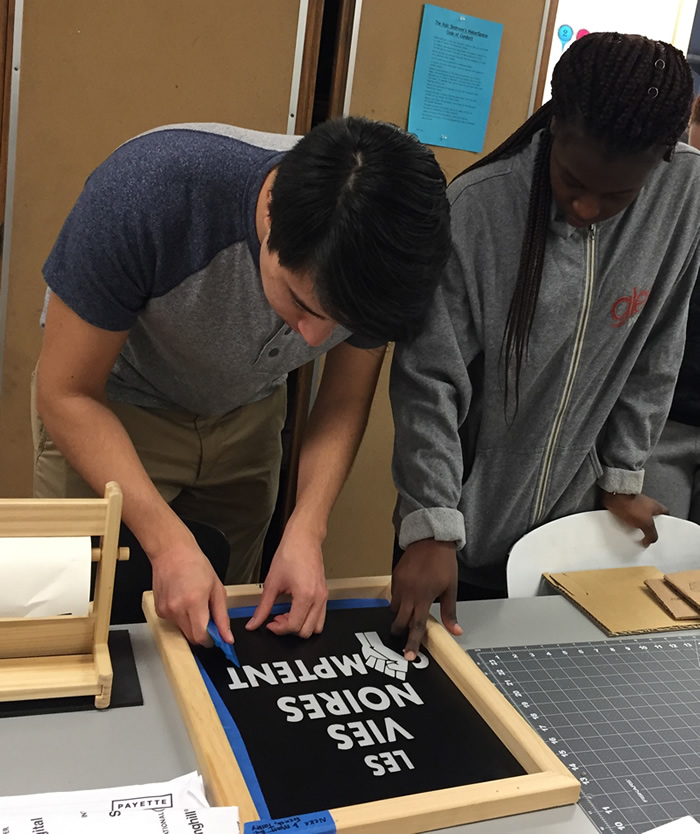
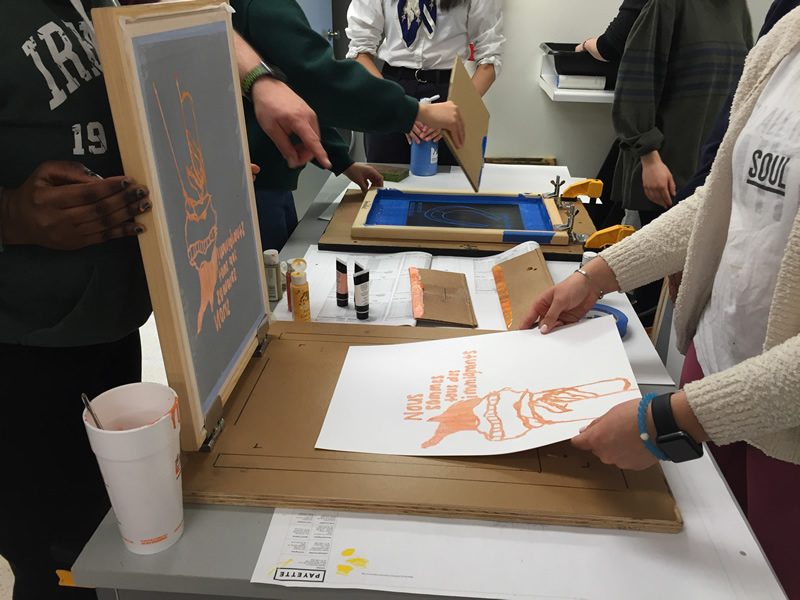
In this French assignment, students use screen printing to create political posters in the tradition of the protest posters of the student uprising in Paris in May 1968. The assignment offers students the opportunity to deploy the visual and linguistic strategies they have studied from these historical documents, and to engage with collaborative making as a form of activism.
Robot Building in Electronics
Physics 213 taught by Evan Halstead
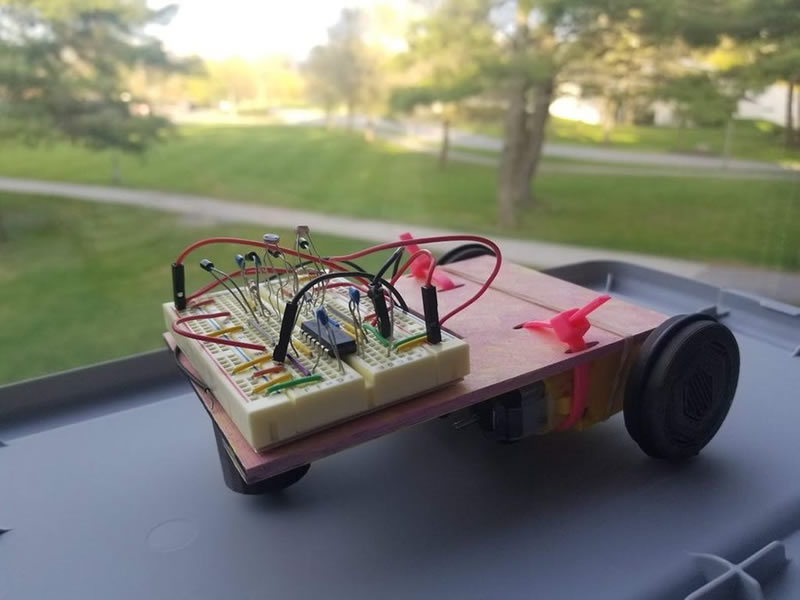
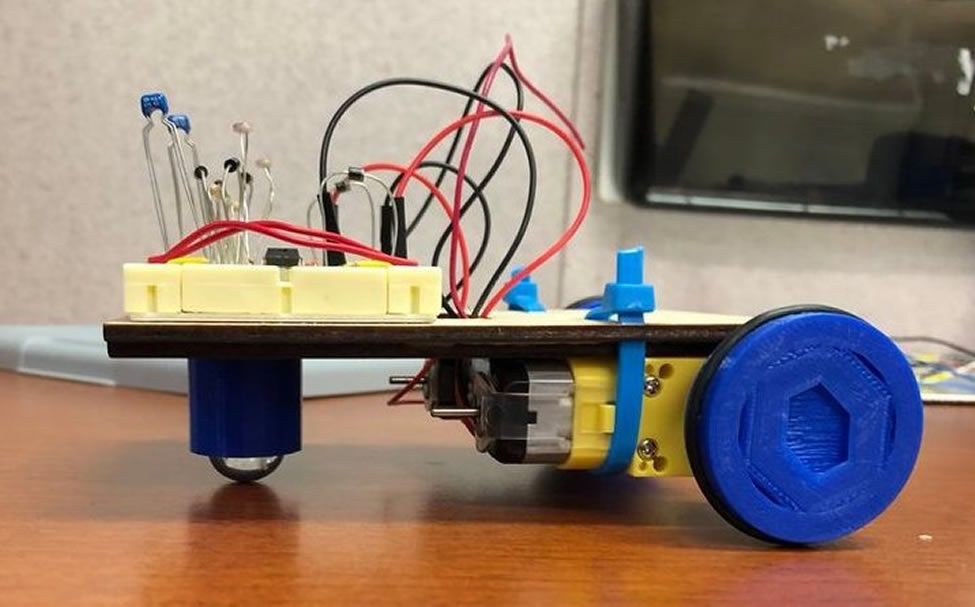
In this electronics project, students design and build a robot that moves and interacts with its environment. The project allows students to incorporate building circuits with 3D printing and the construction of a protective casing to create a working robot.
Book Alteration in Psycholinguistics
Psychology 323 taught by Becca Johnson
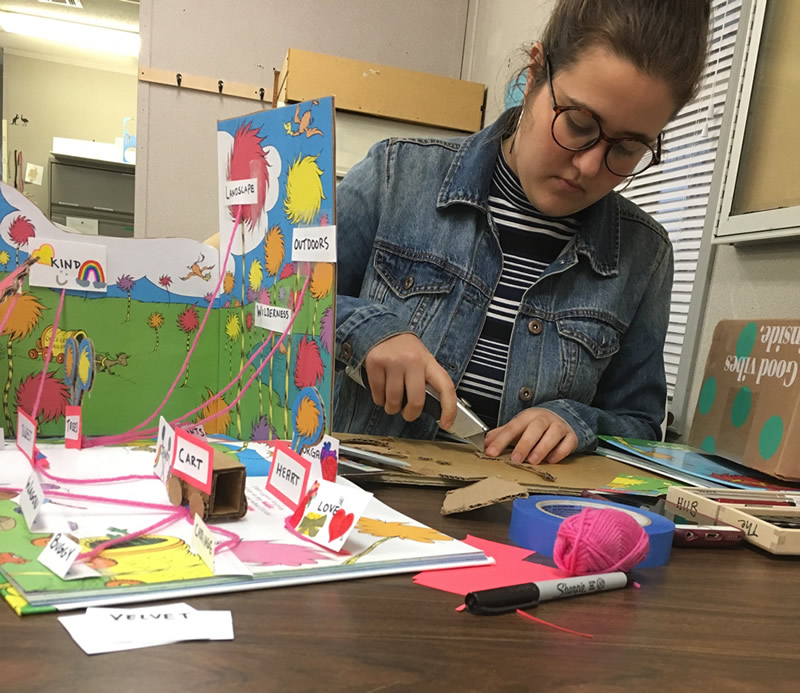
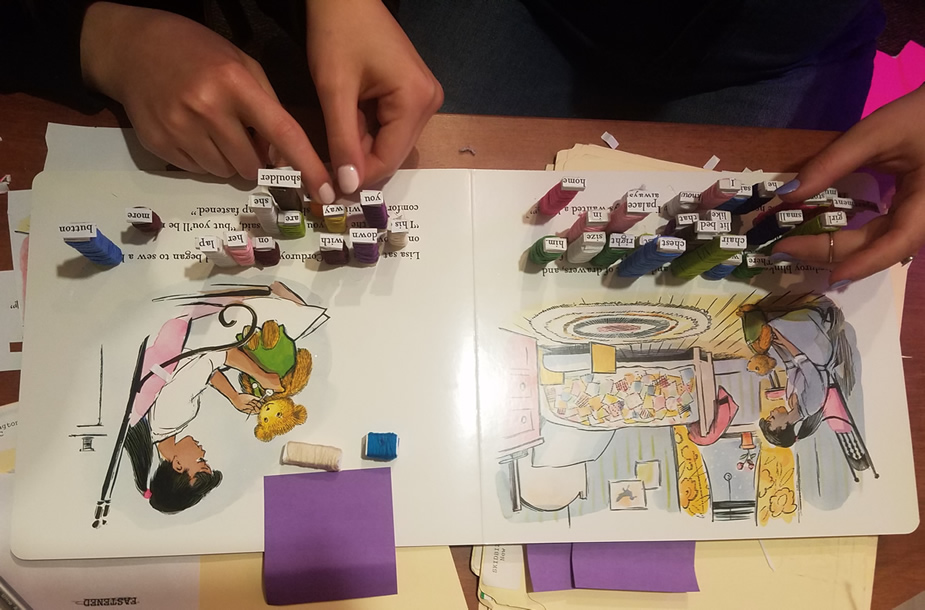
In this psycholinguistics project, students alter a children’s book to illustrate the cognitive, neurological, and linguistic mechanisms that make up language processing. The project allows students to turn invisible phenomena into something that can be visually and physically seen, making the implicit, explicit and the abstract, concrete.